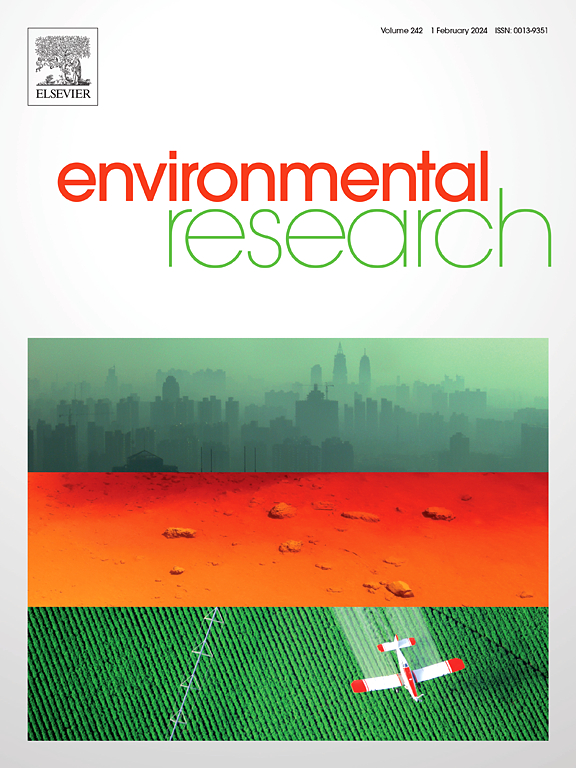Human exposure and health risks to ultraviolet filters in personal care products marketed in China
IF 7.7
2区 环境科学与生态学
Q1 ENVIRONMENTAL SCIENCES
引用次数: 0
Abstract
Ultraviolet (UV) filters are emerging contaminants of great concern that are widely used in personal care products (PCPs). In this study, the concentrations of 15 UV filters in six types of PCP marketed in China were analyzed and the health risks posed by their internal and external exposure were evaluated. 2-ethylhexyl-4-methoxycinnamate (EHMC) presented the highest median concentration of 3150 ng/g in PCPs, followed by 2-ethylhexyl salicylate (109 ng/g) and octocrylene (OC, 95.1 ng/g). The total UV filter concentrations were considerably higher in sunscreens than other PCPs. Total external dermal exposure to UV filters in sunscreen was higher than the total estimated daily dietary intake of UV filters. A physiologically based toxicokinetic model to predict internal UV filter concentrations after sunscreen application for 1 d showed that EHMC had the highest predicted maximum concentration in venous blood at 0.0770 ng/mL, only one order of magnitude lower than the reference dose. The predicted maximum UV filter concentrations were higher for high-lipid-content tissues than venous blood, consistent with UV filters being lipophilic. OC, EHMC and homosalate made large contributions to the toxic activity assay results, and thus should receive more attention than other UV filters.
在中国销售的个人护理产品中紫外线过滤器的人体暴露和健康风险。
紫外线(UV)过滤器是一种新兴的污染物,广泛应用于个人护理产品(pcp)中。本研究分析了中国市场上销售的6种PCP中15种紫外线滤光剂的浓度,并对其内外暴露的健康风险进行了评价。2-乙基己基-4-甲氧基肉桂酸酯(EHMC)的中位浓度最高,为3150 ng/g,其次是2-乙基己基水杨酸酯(109 ng/g)和八烯(OC, 95.1 ng/g)。防晒霜的总紫外线过滤器浓度明显高于其他pcp。防晒霜中紫外线过滤器的总皮肤外部暴露量高于紫外线过滤器的每日估计膳食摄入量。基于生理学的毒性动力学模型预测防晒霜涂抹1 d后内部紫外线过滤器浓度,结果显示EHMC在静脉血中的最大预测浓度最高,为0.0770 ng/mL,仅比参考剂量低一个数量级。高脂组织中紫外线滤光剂的最大预测浓度高于静脉血,这与紫外线滤光剂的亲脂性一致。OC, EHMC和homosalate对毒性活性测定结果的贡献很大,因此应该比其他紫外线过滤器得到更多的关注。
本文章由计算机程序翻译,如有差异,请以英文原文为准。
求助全文
约1分钟内获得全文
求助全文
来源期刊

Environmental Research
环境科学-公共卫生、环境卫生与职业卫生
CiteScore
12.60
自引率
8.40%
发文量
2480
审稿时长
4.7 months
期刊介绍:
The Environmental Research journal presents a broad range of interdisciplinary research, focused on addressing worldwide environmental concerns and featuring innovative findings. Our publication strives to explore relevant anthropogenic issues across various environmental sectors, showcasing practical applications in real-life settings.
 求助内容:
求助内容: 应助结果提醒方式:
应助结果提醒方式:


